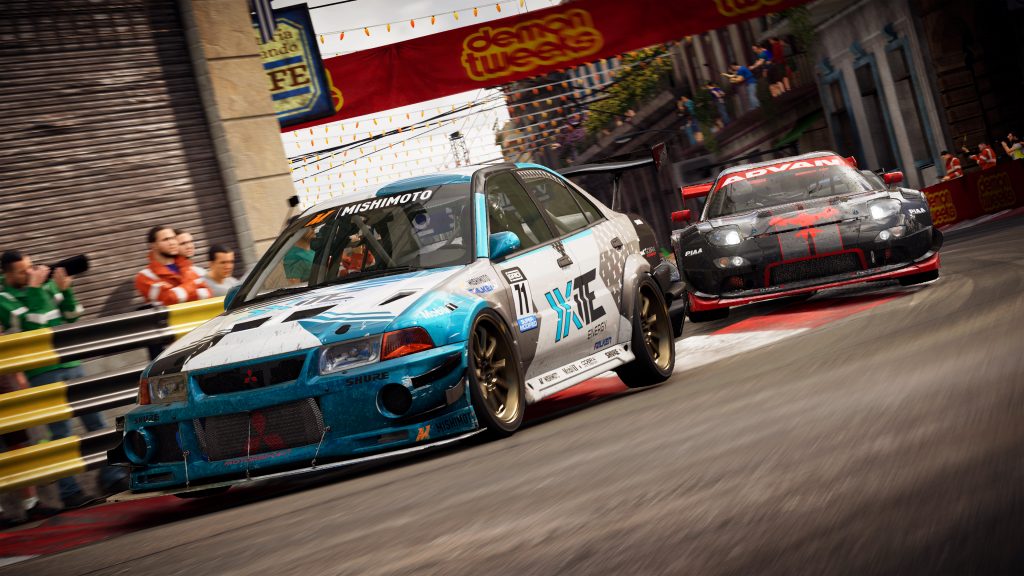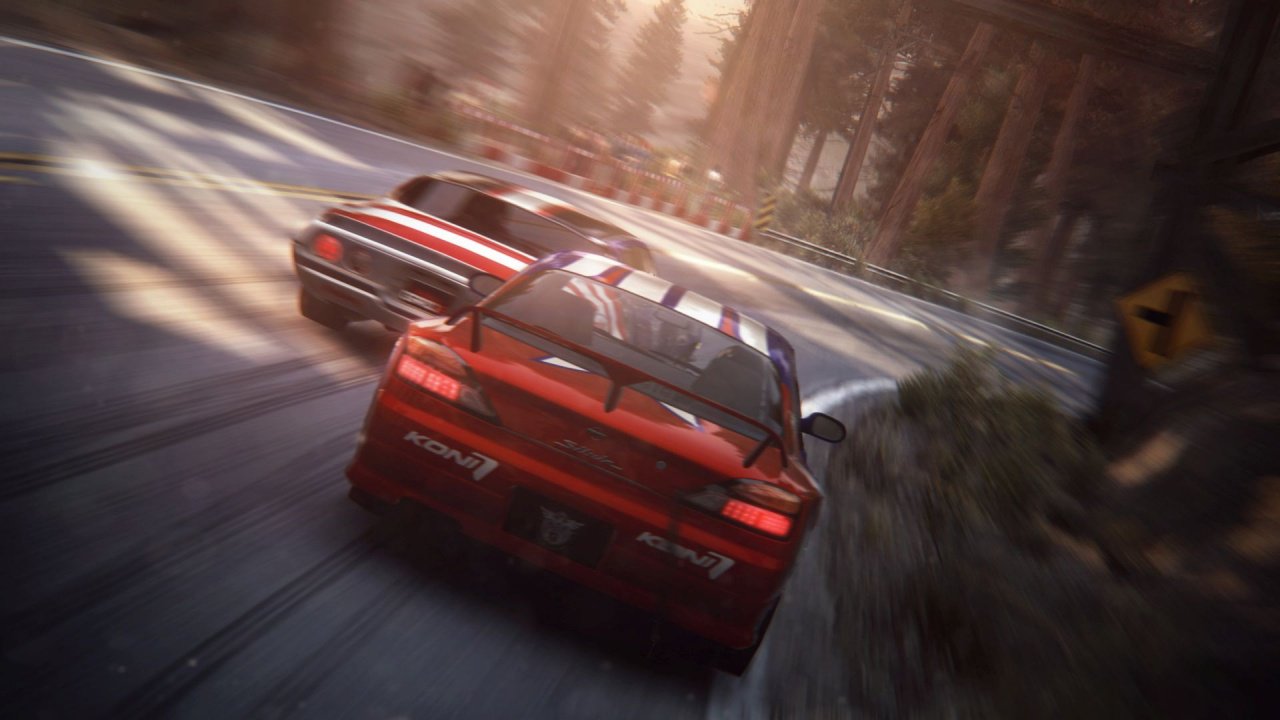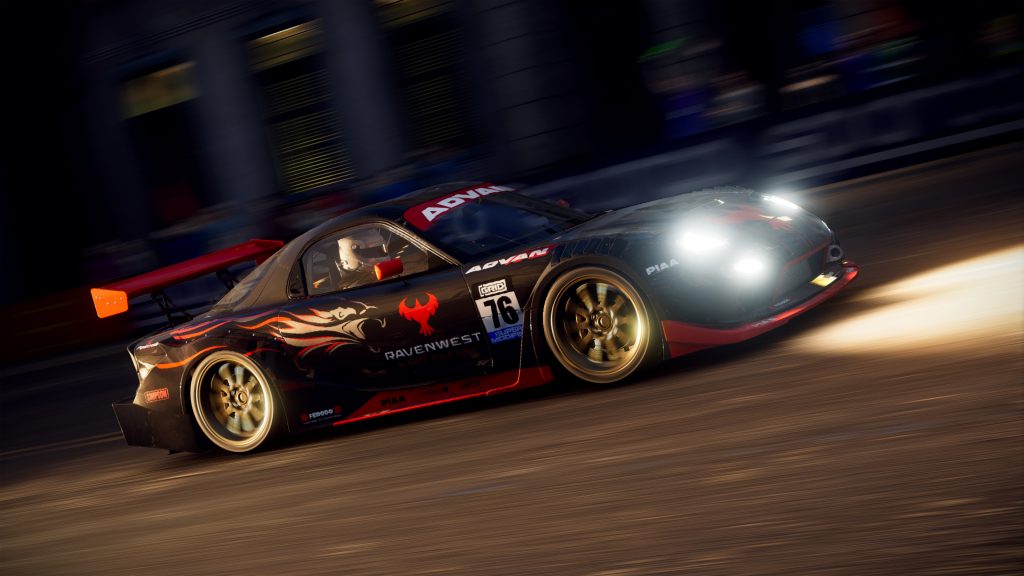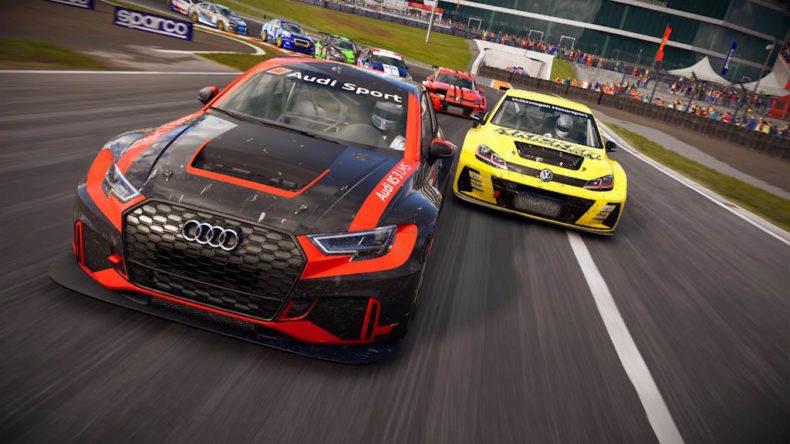As a fan of the GRID series I was pretty excited this week when I went to visit Codemasters to see just how the newest game in the series is shaping up. Honestly, I came away very impressed.
Race Driver: GRID hit the market at the right time, something game director Chris Smith hopes to do again by moving GRID out of the way of the likes of Borderlands 3 and Gears 5, and into its new October release slot. That original game, of which the new game is seemingly a remake, just got it right. The team knows that GRID 2 and GRID Autosport weren’t quite on the same level, despite being good games in their own right, so they’re working hard to make sure that GRID lives up to the reputation of its inspiration, while adding a few modern touches that bring it into the current generation.
Right off the bat, it feels like a GRID game. The handling is light and instant, with just the right amount of twitch for the faster GT cars like the Porsche 911 RSR and the Dodge Viper (how could I not try out the Viper?) but never quite losing that sense of realism that’s always been close to the heart of the series. This is partly down to the team’s philosophy of sitting somewhere in the grey area between arcade and simulation racing, and partly down to the handling model being developed by the same folks that made DiRT Rally 2.0’s handling so tight and responsive.

Although given free reign over the expansive content available in the game (despite it not quite being finished), there are only certain things we’re allowed to talk about. The new Shanghai street circuit was the setting, oval stock cars the competitors, and well, it wasn’t my smoothest or cleanest race. In fact, I got to see just what kind of mess your vehicles can end up in, especially when you accidentally take your eye off the road and go head-first into an outcropping wall. Luckily, the rewind feature is there to help when you’re a dumbass like me. The oval stock class is an interesting one to drive too, as they have tonnes of grunt and are easy to spin if you put your foot down too quickly when coming out of a corner. I mean, they’re designed to go around ovals. It’s right there in the name.
But they feel remarkably different to the muscle class, as you would expect. Driving a Chevrolet Camaro around the same Shanghai circuit was so much easier. Although it’s still a heavy machine with lots of rear-wheel power, it’s one that can navigate tight corners and fast chicanes, with the added bonus of sliding out the back end now and again. Because it looks cool, obviously. Then again, switching things up, I threw the GT Class Dodge Viper around Brands Hatch and things felt even smoother and more dialed-in, thanks to it being a track car. Braking for corners was far easier; turning in and sailing around each bend was still challenging but I always felt like I had more control than the earlier cars I mentioned.
The handling is one thing, but it needs to be backed up by AI that doesn’t follow a procession, like most racers out there. When asked about how GRID would tackle this, Chris was immediately, noticeably passionate in his response. He was animated as he talked about the 400+ different, separate AIs that are in the game and how they have been taught to race by their in-house race driver and a couple of unnamed eSports racers, to the point that the AI can now beat the times set by those drivers. Each AI will fight for every place on the grid, it’s not just about you, just as real motorsport isn’t just about one driver. The aim is to replicate things that happen in real motorsport, and that includes overtakes all over the circuit, up and down the order.

A lot of this authenticity is down to the AI choreographer, that dictates how events unfold for the AI. Chris is keen to point out that the player’s fate is entirely in their hands, as nobody wants the game to suddenly blow out your tyre at random, but things like that can, and do, happen to the AI. In this hands-on, this choreography was turned up higher than usual to allow us to see just how interesting it is when things go wrong. Sometimes it was just allowing simple mistakes like competitors braking late and going too deep into a corner, sometimes it had them completely breaking down and pulling to the side of the road, but sometimes the results would be catastrophic. Cars would pitch and roll, spin out and smash against the barriers, and sometimes they’d take others with them. It’s an impressive sight and although yes, it happened more than you’d expect because it was deliberately turned up, it still felt authentic to the way things really happen in motorsport, albeit with a bit more flair for the dramatic.
It never felt too much, either. Sure, things got aggressive from time-to-time, but again the director was quick to point out that the AI won’t pit you and spin you out on purpose. It may go for an aggressive overtake and get things a bit wrong, but mostly it’s all about side-to-side budging, all with that “rubbing is racing” philosophy in mind. On the other hand, if you yourself get a bit too close to a rival and nudge them a few too many times, you’ll get to see, as I did, the Nemesis system in action.
No, this isn’t like the Nemesis system in Shadow of Mordor/War, there’re no assassinations or murder of any kind in GRID. What does happen is that one particular AI will make it their mission to beat you…and only you. No matter the cost. Of course, if you race fairly and cleanly, you’ll never see this system in action, but have a scrappy first race like I did and, oh man, you’ll have a fight on your hands. You may, like director Chris Smith, find yourself in an ongoing rivalry with an AI driver. He says he never normally remembers the names of AI drivers, but he and Fernandez were a different story. “Me and him got beef,” he tells us, smiling.

That sense of unpredictability runs all the way through GRID, with every race feeling different as a result. You may find yourself in an epic battle for first, trading paint as you try to make that overtake, or you may have to avoid crashes. Or you may have a completely uneventful race, because you qualified in first and just blasted off the line and never looked back. One thing’s almost guaranteed though: it’ll feel like real motorsport.
When asked about multiplayer and how DLC will work, Chris was happy to report that all new tracks will be free. He wouldn’t say what those tracks will be, but the team doesn’t want to split the player base when it comes to multiplayer. Similarly, although new cars won’t be free, if you’re playing with friends that own the DLC vehicles and want to race in a new class of car, you will be able to “rent” a DLC car (for free) so you can still keep racing. You won’t get a choice of car or its livery, but giving players the freedom to keep playing together was important in deciding how things should work.
In terms of tracks, there are currently 4 cities (including the new Shanghai and Havana tracks) and 8 real circuits (including Brands Hatch and Silverstone) with over 80 routes across them all. On top of that, you can select the time of day and even have wet weather for the first time, so naturally I tried that out on the new Havana street circuit. In classic Minis. It looked great as the plucky little beasts were tossed around the soaking tarmac, their short wheel base making them extremely nimble and showing yet again how each vehicle handles differently.
There’s all sorts of customisation on offer too, from changing the colour and livery of your cars, to adding player cards (Chris laughed as he quickly pointed out that this was in place before Apex Legends did it) on which you can stamp accolades to add a personal touch to your presence, whether it be online or off. The customisation continues with assists, as again Chris was keen to let us know that everyone should be able to enjoy GRID, from casual players to hardcore sim racers. The motto was that GRID is “where sim players go to have fun, and casual players go to have serious fun.”
And you know what? I did have fun.
Roll on October.





